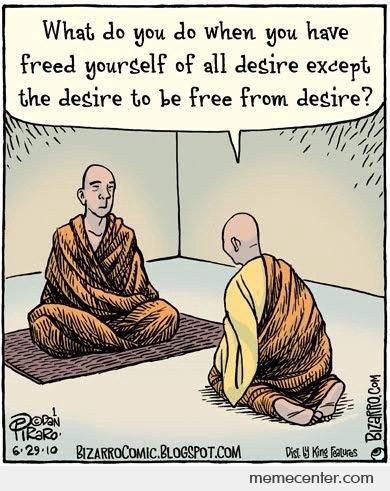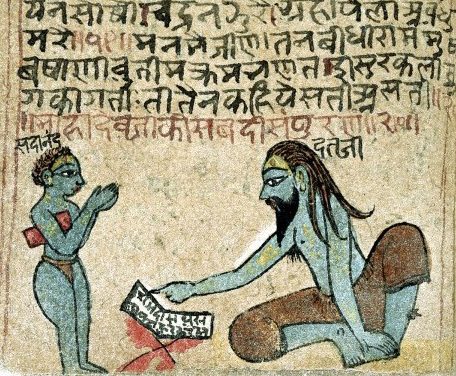Find a Teacher, Not a Style.
Yoga texts endlessly communicate the importance of having a teacher. Without one we fall blind to our conditioning and habitual ways of self-sabotage and deceit. The student must seek out a teacher that can patiently penetrate their resistant armour and not simply coddle their insecurities. There must be a connection from the start on both sides. The more experience we gain, and as the practice weaves its way through us, the more necessary it becomes to have a guide. Pitfalls become increasingly deeper as we are less likely to see past our assumed accomplishments and our gained knowledge.
Find a teacher. Not a style, not a brand name. It’s not about being part of a club. It’s about having a common interest and quest. There are so many yoga styles, franchises and associations out there now but it still comes down to finding a teacher that fits with our current goals and pursuits. These may change over time but guidance is required throughout the yogic journey.
There may be several teachers all teaching one specific style but they can all be so very different and can all have various interpretations of what was learnt. We all come from different backgrounds with different conditioning, have had different life experiences and have different desires. Even though we may share the same teacher, we all come to different understandings, we attend different courses and hear different parts of the lectures. We all have different strengths and weaknesses, different personalities and all express ourselves in different ways. Every teacher is different regardless the style they may teach.
A style of yoga should not become the McDonald’s of yoga where you know exactly what you will order when you arrive to class. To have a script repeated in every class no matter where you go in the world is not teaching. Yoga is not to be made into generic franchises like we have done with the fast food industry. Even if one follows a sequence and specific techniques, it should still remain up to the one guiding to adapt to the participants. If not, we force the students to adapt to a system, sometimes not appropriate to them and with negative consequences.
Seek out a teacher that you connect with and trust. It is them that will transmit the knowledge sought after. I have always said when I found my teacher I couldn’t care less if he was teaching toilet cleaning 101, I believed he had something I needed. I never heard of the style of yoga he taught nor did it matter. I got fed every time I was in his presence and came home with more than a mouthful of homework to chew on, always returning knowing less than what I went with.
I had to cross the ocean to find my teacher. People today are barely willing to go farther than the local drugstore to take a class, as there’s a studio on almost every corner. Most have no use for a teacher and are only looking for a good workout, unwilling to pay more than the price of a coffee for something that is supposed to be so ‘life-changing’.
Convenience and what’s popular wins for the masses, the closest studio with special offers and a buffet of teachers to choose from. We land up in fast food joints going for the cheapest form of quantity instead of having just one choice of quality that satisfies.
But if we seek more, we must keep searching until we find it.

One skillful teacher can reflect back all we need to know. When that is no longer possible they should guide us to where we need to be next. However, most of the time it’s the student that leaves once they have been triggered or hit a block that they are unable to overcome or see clearly through. The yoga style or the teacher will be blamed and the student will change course and go find another system or teacher. We may advance quickly in the new system as it is still exciting and appears different but there will come a time when we hit the same wall, are faced with the same block. We can either run away once again and switch direction, make it appear different only to continue the process and hit the same threshold of our capacities… or we stick it out.
As Cheri Huber, founder of The Zen Monastery Peace Center, says:
“It’s better to dig one very deep hole and find water than to dig 50 shallow ones and always come up with nothing.”
I taught classes and attended others where one person stays in the back doing their own thing. Going into a twist when the rest of the group is in a forward bend. Yoga has turned into ‘listen to your body, do your own thing, do what feels good, be your own teacher’. This is delusional if we ever wish to evolve past our own limited preferences.
I understand the resistance to taking on a guru, especially because the title has been so abused. A guru is not necessary, but a guide is. Left on our own, we simply fall into thick and blinding fearful conditioning. The more we see, the harder it gets to crawl out of and the more necessary it is for an impartial presence. A proper guide should never seek to take anything away from us, they do not want anything from us, ever. They are there only to reflect, to lead us along a path they have already traveled, and to look out for our wellbeing. They don’t need us, but we need them.
My husband often tells me a story of when he was on a mountain climbing expedition and there was a chance of an avalanche due to bad weather. One of the participants piped in and exclaimed ‘I think we should go that way’. The guide yelled back:
‘This is not a democracy!
I am the one responsible for the group. Your lives are in my hands.’
It is the same in yoga. The classroom is not a democracy. The teacher has hopefully covered enough ground to have more experience and skill than the students and should be the one calling the shots. They are going in a certain direction and will take you along if you follow but not if you stray off the path. They have seen the pitfalls. If anything happens to a student, it is the teacher who accumulates the karma. At the same time, if we can’t listen to instruction as a student, we put the rest of the group at risk by altering the rhythm. If we are unable to follow simple directions and believe we must do our own thing instead, how can we practice yoga and follow the life force, nature’s guidance?
This is not the same thing as blindly submitting to someone else and being a doormat. We must know who is leading the pack, assess our skill level, and be honest in how much we actually know. Yoga has always been taught through transmission from teacher to student. Not to suppress the student, but to protect them, from themselves. Yogis knew the slippery slopes the mind and pride travel and the high risk of avalanches that arise. The more so the higher we climb with each year of practice experience we accumulate.
I spent some time at an ashram and one day in the garden during work hours I overheard a swami on her morning walk demanding to know what a student thought she was doing. Apparently the woman took it upon herself to rearrange the plants in a new configuration without permission. The student said she thought it would look better this way. Well the student got an earful of how she was not asked to make it better, she was asked just to do the work. I chuckled as I thought it was so obvious until of course I found myself often going to make the same mistakes myself. Thinking it’s about me and my ideas and making things better and correct, only falling short on my unconscious egocentric desires and ambitions.
To have a teacher helps us stay aligned on the path while dangerously treading our subconscious territory. The guide relieves us of what we want to do and points out what needs to be done. Are we able to do the work required? Nothing more, nothing less.
Radhasri (Rhonda Fogel) has been teaching yoga in Canada since 1998 and is the founder of Hatha Yoga Shala currently based in Montreal. She is an authorized Shadow Yoga teacher since 2005.
